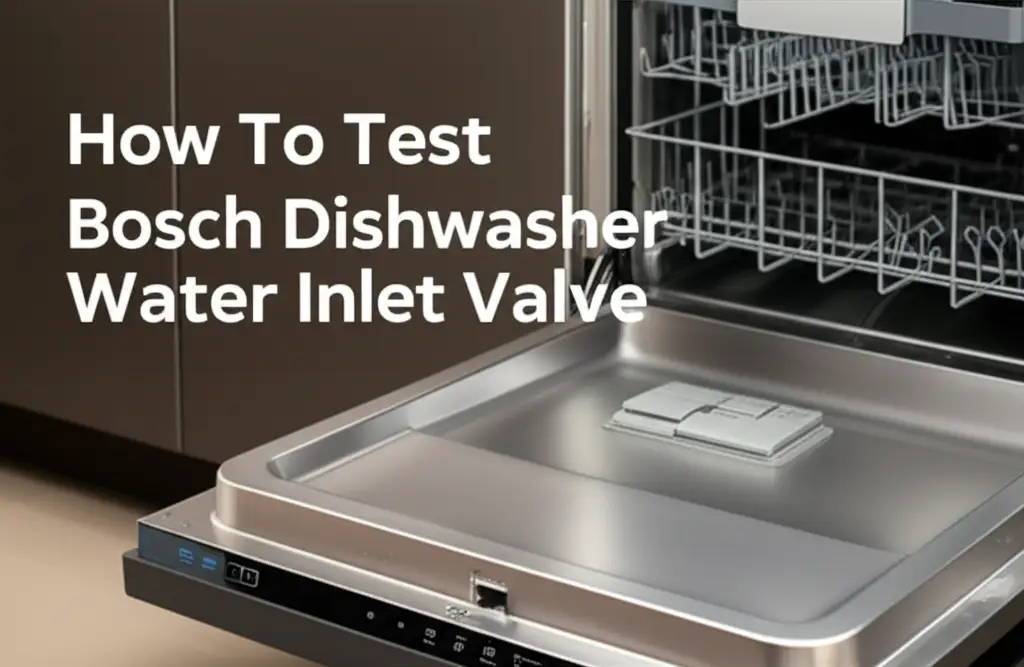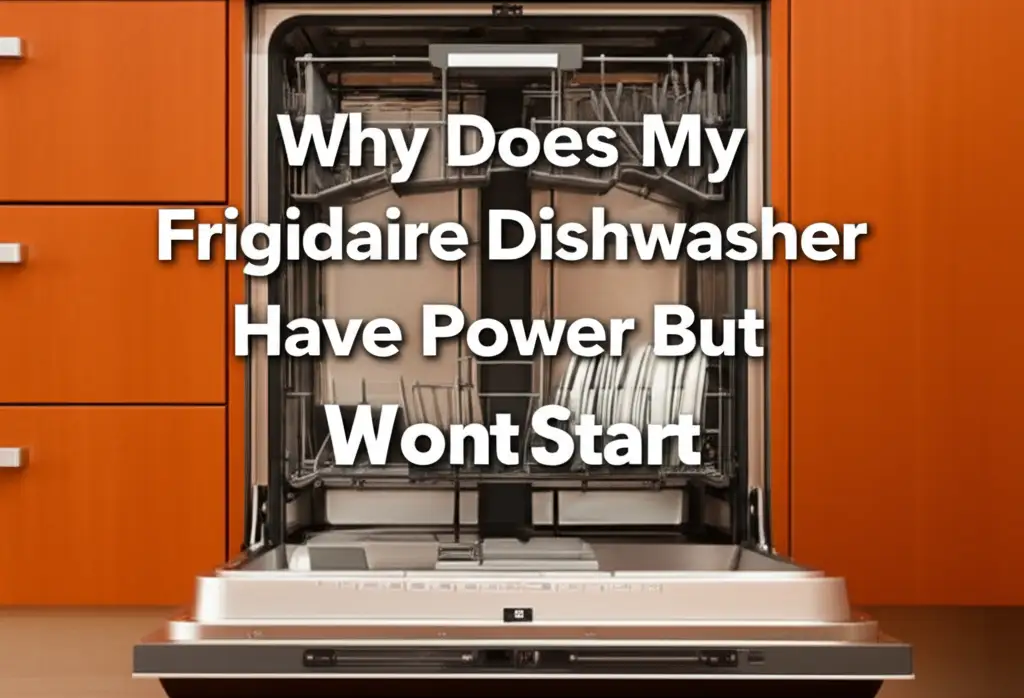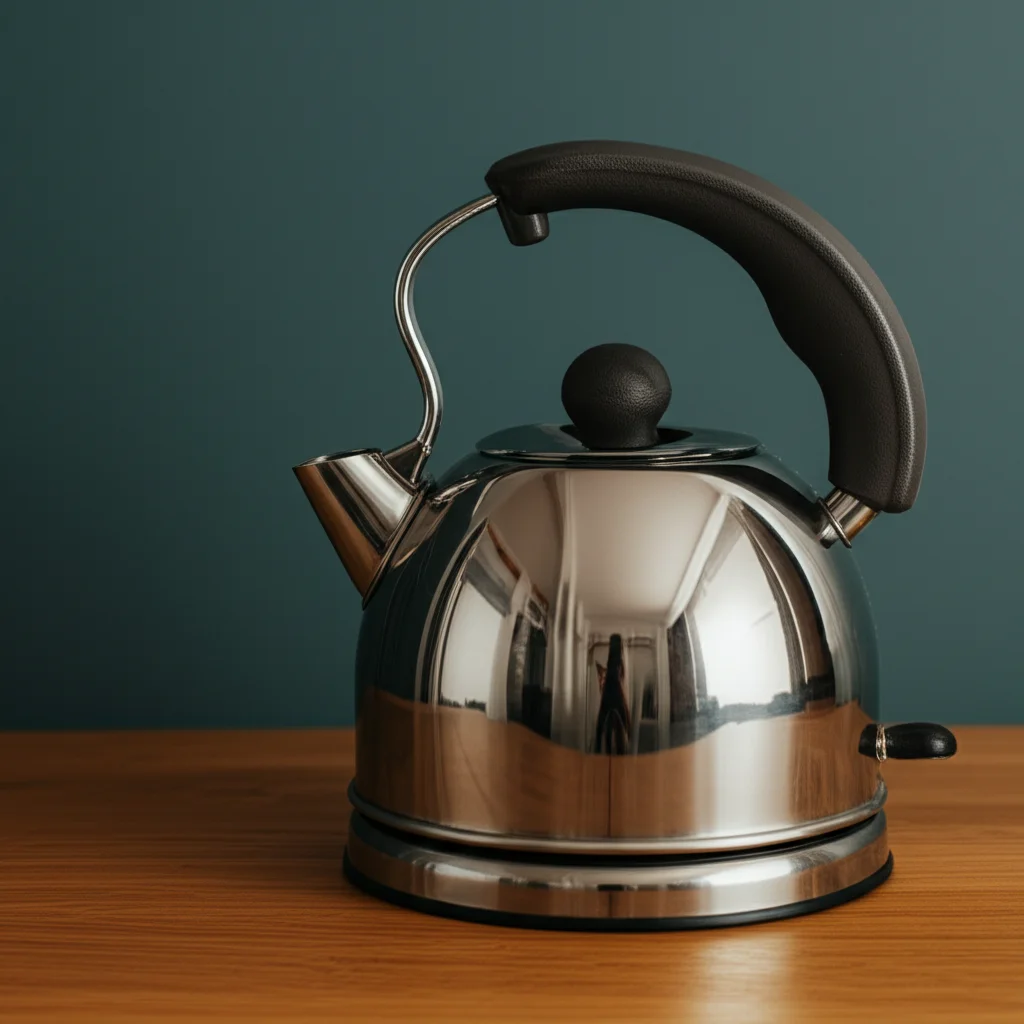· Todd Martin · Home Maintenance · 12 min read
How To Test Bosch Dishwasher Water Inlet Valve

Test Your Bosch Dishwasher Water Inlet Valve
Your Bosch dishwasher is a workhorse in the kitchen. It handles daily dish cleaning with ease. But what happens when it stops filling with water? Or maybe it fills too much? Often, the culprit is the water inlet valve. This small part plays a big role in your dishwasher’s operation.
I remember my own Bosch dishwasher acting up. It just sat there, humming, but no water came in. I felt a little lost at first. This guide helps you diagnose the problem yourself. We will walk through testing your Bosch dishwasher water inlet valve. We will cover common symptoms and the tools you need. We will also provide clear, step-by-step instructions. You can identify if your valve needs replacement. This article gives you the power to troubleshoot effectively.
Takeaway
- Identify Bosch dishwasher water inlet valve issues through common symptoms like no fill, overfill, or continuous filling.
- Gather basic tools: a multimeter, screwdrivers, pliers, and towels.
- Prioritize safety by disconnecting power and water supply before starting.
- Locate and physically inspect the valve for visible damage or blockages.
- Use a multimeter to test the valve’s electrical continuity and voltage during operation.
- Interpret test results to determine if the water inlet valve is faulty and requires replacement.
To test a Bosch dishwasher water inlet valve, first disconnect power and water. Locate the valve, typically behind the lower kick plate. Use a multimeter to check the solenoid’s continuity. A reading between 500-1500 ohms indicates a good valve. Also, check for proper voltage (120V AC) reaching the valve when the dishwasher calls for water.
Understanding Your Bosch Dishwasher Water Inlet Valve
The water inlet valve is a vital component in your Bosch dishwasher. It controls the flow of water into the appliance. Think of it as a gatekeeper. When your dishwasher needs water, the control board sends an electrical signal. This signal opens the valve. Water then flows into the tub.
This valve has a solenoid. The solenoid is an electromagnet. When power reaches the solenoid, it pulls open a plunger. This action allows water to enter. When the dishwasher no longer needs water, the power stops. The solenoid closes, and the water flow stops. A small filter screen often sits at the valve’s entrance. This screen catches debris. It prevents clogs in the valve itself.
A faulty valve can cause many problems. It can stop water from entering. It can also let too much water in. It might even allow water to continuously fill. Knowing how this valve works helps you troubleshoot effectively.
Symptoms of a Faulty Bosch Dishwasher Inlet Valve
Your Bosch dishwasher can show several signs of a bad water inlet valve. Recognizing these symptoms helps you pinpoint the problem quickly. The most common sign is a lack of water. Your dishwasher might start its cycle, but no water enters the tub. It might just hum.
Another symptom is low water fill. The dishwasher may fill with some water, but not enough. This results in dirty dishes. You might also notice your dishwasher continuously fills with water. This happens even when the cycle is off. This can lead to overflows. If you see water accumulating in the bottom of your Bosch dishwasher when it’s not running, this is a clear sign. Explore reasons why your Bosch dishwasher keeps filling up with water.
Sometimes, your dishwasher might make a buzzing noise. This happens when the valve tries to open but cannot. You might also notice slow filling. This indicates a partially blocked or failing valve. If your Bosch dishwasher has water in the bottom even after a cycle, it might indicate an issue with draining or a continuously open inlet valve. Understand why your Bosch dishwasher has water in the bottom.
Essential Tools for Testing Your Bosch Dishwasher Valve
Before you start any testing, gather the right tools. Having everything ready saves you time and effort. You will need a multimeter. This device measures electrical voltage, current, and resistance (ohms). It is crucial for testing the solenoid. A digital multimeter is easiest to read.
You will also need various screwdrivers. Both Phillips and flathead screwdrivers are helpful. Pliers might be necessary for hose clamps or stubborn connections. Have a few towels or a bucket ready. Water may spill when you disconnect hoses. Safety glasses and gloves are also good to have. These protect your eyes and hands.
A flashlight is useful. It helps you see into dark areas under the dishwasher. Remember to have a camera or smartphone nearby. Taking pictures of connections before you disconnect them helps with reassembly. These simple tools make the testing process smoother and safer.
Safety First: Preparing for Bosch Dishwasher Testing
Safety is the most important step before you touch any appliance. Working with water and electricity requires caution. First, disconnect power to your Bosch dishwasher. Do this at the circuit breaker box. Find the breaker labeled for your kitchen or dishwasher. Flip it to the “off” position. Do not just rely on turning the dishwasher off at the control panel.
Next, turn off the water supply to the dishwasher. Look for the shut-off valve under your sink. It connects to the dishwasher’s water supply line. Turn the handle clockwise until it is fully closed. If you cannot find a dedicated shut-off valve, you might need to turn off the main water supply to your house.
Once both power and water are off, disconnect the water supply line from the dishwasher. Have a towel ready to catch any residual water. Make sure the area around the dishwasher is dry. This prevents slips and electrical hazards. These steps ensure your safety throughout the testing process.
Locating the Water Inlet Valve on Your Bosch Dishwasher
Finding the water inlet valve is your next step. The location is fairly consistent across Bosch dishwasher models. The water inlet valve is usually on the bottom front of the dishwasher. It is often behind the lower kick plate. This is the trim panel at the very bottom, beneath the dishwasher door.
To access it, you will need to remove the kick plate. This usually involves unscrewing a few screws. Once the kick plate is off, you should see the valve. It is a small, rectangular or cylindrical component. It has a water supply hose connected to one side. An internal hose connects from the other side to the dishwasher’s tub. Electrical wires also connect to the valve’s solenoid.
Take note of how the hoses and wires connect. You can take a photo with your phone for reference. This helps you reconnect everything correctly later. Some models might require pulling the dishwasher out slightly. Most Bosch models allow access from the front.
Step-by-Step Electrical Testing of the Bosch Inlet Valve
Testing the electrical components of your Bosch dishwasher water inlet valve is crucial. This helps determine if the solenoid is getting power or if it is faulty. This part requires your multimeter. First, visually inspect the valve. Look for any cracks, leaks, or corrosion around the electrical terminals.
Next, you will test the solenoid’s resistance (ohms). This checks if the coil inside the valve is intact. Disconnect the electrical wires from the valve’s terminals. Set your multimeter to the ohms (Ω) setting. Touch one probe to each terminal on the valve’s solenoid. A working solenoid will show a resistance reading. For most Bosch dishwasher water inlet valves, this reading should be between 500 and 1500 ohms. No reading (OL or open circuit) indicates a broken coil. A very low reading suggests a short circuit. Both mean the valve is bad.
Finally, you might want to test for voltage. This checks if the control board sends power to the valve. This step involves live electricity and should only be performed if you are comfortable and trained. Reconnect the wires to the valve. Reconnect the water supply. Briefly restore power to the dishwasher. Start a cycle that calls for water. Use your multimeter to test for 120V AC at the valve’s terminals. If there is no voltage, the issue might be with the control board or wiring, not the valve. If there is voltage but the valve does not open, the valve is faulty.
Physical Inspection and Water Flow Test for the Bosch Valve
Beyond electrical checks, a physical inspection and simple water flow test can offer more clues. First, examine the valve’s exterior. Look for any visible signs of damage. Check for cracks in the plastic housing. See if there are any water leaks around the connections. A leak can indicate a failing seal or a damaged valve body.
Next, inspect the filter screen. This screen is usually located where the main water supply hose connects to the valve. It often unscrews or pulls out. If this screen is clogged with sediment or debris, it can restrict water flow. This might make the dishwasher appear to not fill properly. Clean the screen gently with an old toothbrush under running water if it is dirty. This simple cleaning can sometimes resolve water fill issues. Learn how to clean a water inlet valve on a washing machine – the principles are similar for dishwashers.
Finally, a quick manual water flow test can be done if you suspect a blockage within the valve itself. With the power and water still off, disconnect the outlet hose from the valve (the one going into the dishwasher tub). Place a bucket or towel to catch water. Briefly turn on the water supply to the dishwasher. See if water flows freely through the valve. Do this for only a second or two to avoid flooding. If water flows out freely from the valve’s outlet, the valve mechanism itself might be fine, but there could be a blockage further down the line, or the electrical signal is not working. If no water flows, or only a trickle, even with the water supply on, the valve is likely clogged or mechanically stuck.
Deciphering Test Results: Is Your Bosch Valve Faulty?
After performing your tests, it is time to interpret the results. This helps you decide if your Bosch dishwasher water inlet valve needs replacement. If your multimeter showed an “OL” (open circuit) reading when testing resistance, the solenoid coil is broken. This means the valve is faulty and needs replacement. If the reading was very low, indicating a short, the valve is also bad.
If you tested for voltage and saw 120V AC reaching the valve, but the valve still did not open or pass water, the valve is definitively faulty. It is receiving the signal but not responding. This points to an internal mechanical failure or a seized solenoid. However, if no voltage reaches the valve, the problem is likely with the dishwasher’s control board or the wiring leading to the valve. In this case, the valve itself might be fine.
Finally, if your physical inspection revealed cracks, leaks, or a heavily corroded valve body, replace it. Even if it functions intermittently, it is a ticking time bomb. A severely clogged filter screen, once cleaned, might resolve the issue. If cleaning does not help, or the valve is mechanically stuck, replacement is the best option. Knowing how to replace a similar component, like how to replace a KitchenAid dishwasher water inlet valve, can give you confidence in tackling the job. Replacing a water inlet valve on a Bosch washing machine also shares similar principles. Consider how to replace a Bosch washing machine water inlet valve.
FAQ Section
How long do Bosch dishwasher water inlet valves last?
Bosch dishwasher water inlet valves typically last 5 to 10 years. Their lifespan depends on water quality and usage frequency. Hard water with high mineral content can shorten their life. Sediment buildup can cause them to fail sooner. Regular maintenance can help extend their service.
Can I clean my Bosch dishwasher water inlet valve?
You can clean the filter screen at the valve’s entrance. This screen can get clogged with debris. Use a small brush and running water to clear it. However, you cannot clean the internal solenoid or mechanical parts. If these parts are faulty, replacement is necessary.
What causes a Bosch dishwasher inlet valve to fail?
Several factors cause valve failure. Electrical issues, like a burnt-out solenoid coil, are common. Mineral buildup from hard water can clog or seize the valve’s internal mechanism. Physical damage or wear and tear over time also cause failure. Constant opening and closing wears out the valve.
Is it hard to replace a Bosch dishwasher water inlet valve?
Replacing a Bosch dishwasher water inlet valve is a moderately difficult task. It requires disconnecting water and power. You must also remove dishwasher panels. If you are comfortable with basic appliance repair and follow instructions, you can do it. Otherwise, hiring a professional is a good idea.
What if my Bosch dishwasher fills with too much water?
If your Bosch dishwasher fills with too much water, the inlet valve is likely stuck open. This means the valve is faulty. It might be receiving a continuous signal or is mechanically jammed open. You should replace the water inlet valve to fix this issue.
Conclusion
Diagnosing a problem with your Bosch dishwasher can feel overwhelming. However, testing the water inlet valve is a manageable task. We covered the common signs of trouble. We also discussed the necessary tools for the job. You now understand the step-by-step process. This includes preparing safely, locating the valve, and performing electrical and physical checks.
Knowing how to test your Bosch dishwasher water inlet valve empowers you. You can pinpoint the issue yourself. This saves you time and money on service calls. If your tests confirm a faulty valve, you can confidently decide on replacement. Remember to always prioritize safety when working with appliances. Your Bosch dishwasher will be back to washing dishes properly in no time. Tackle this repair with confidence.
- Bosch dishwasher repair
- Water inlet valve testing
- Dishwasher troubleshooting
- Appliance diagnostics
- Bosch dishwasher parts





